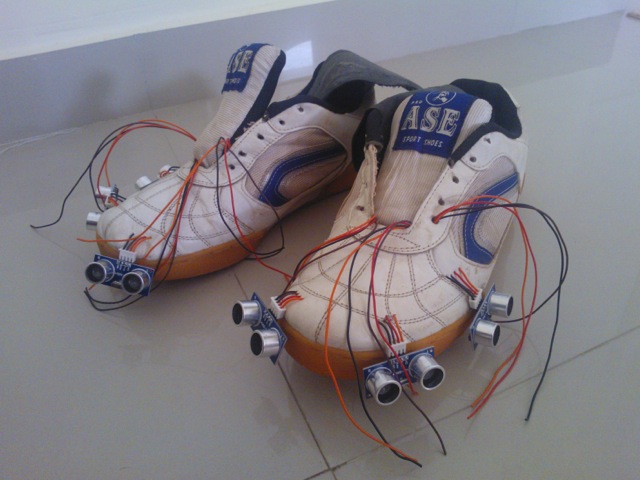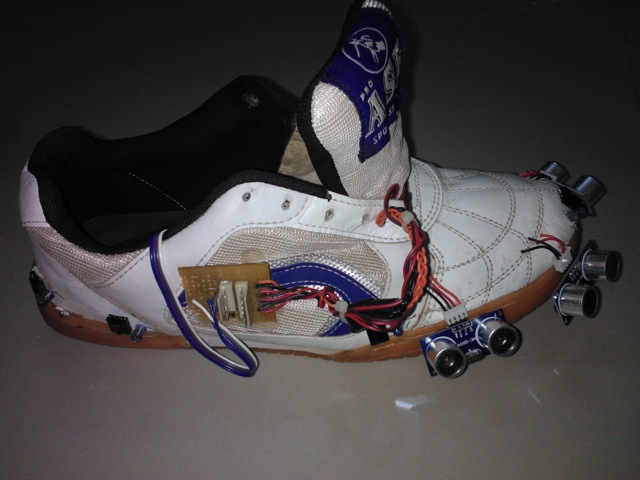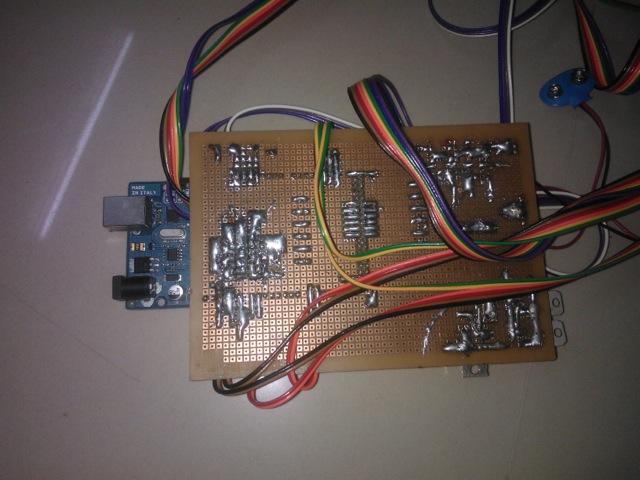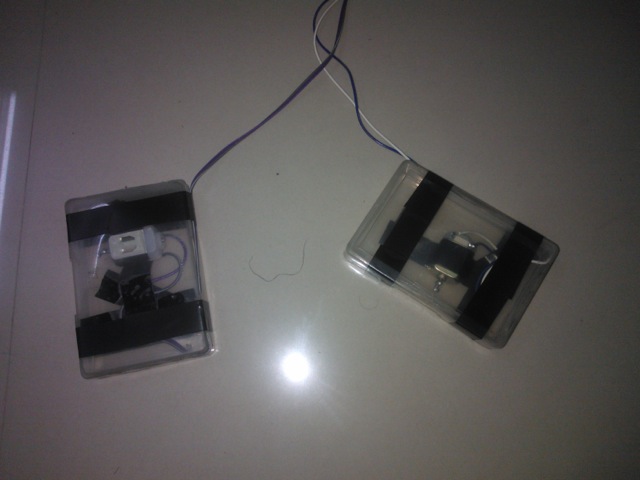It’s been a long time since I’ve done anything in electronics. Well, not really; I’ve only not published them. The past few months, I’ve spent working on my undergrad project. There were mini-projects I took from time to time but this was my first major project that would be under some real scrutiny and I had to concentrate on it. This is essentially why I have been quite offline in terms of publicising my real work, although you would find my non-tech thoughts spread around the inter-webs(if you’re looking really hard, I must add – which is a very sad realisation). So, here, I bring to you my prized brainchild – Walking aid for the blind.

Over the next few days I will be posting, in parts, my complete work on this concept. It is totally open-source. You’re free to build one for yourself. All I ask is for you to just include me in the credits.
Okay! So first let us understand what we’re building here.
Idea of the walking aid
The walking aid is supposed to be an external prosthesis that would help its recipient – a blind user – be aware of the obstacles surrounding him. The resulting device should do all of this without impairing one’s daily life. We want it to be helpful to the user but not at any expense. Of course, it is not going to be the most perfect solution but it needs to tackle the basic problem without creating new ones. Most of my project duration had me studying the implications of using different forms of sensing and alerting and long term physical and psychological effects on the user. I’m happy to say we’ve succeeded in making a device that aids without adversity.
Of course, since it is an undergrad project, we had to study the present day condition of the problem we wish to tackle. We looked up existing solutions to the plight of the blind and found a lot of them. To name a few,
- Seeing Aid – A pair of glasses that use mounted infrared LEDs for obstacle detection. User is notified using different tones.
- Laser Cane – A cane that uses three lasers for detection. Sound and vibrations (front beam only) are used to convey information.
- Mowat Sensor – A handheld device that emits and receives ultrasound. User is alerted using vibrations by varying intensity.
- Nottingham Obstacle Detector – A sonar handheld, that varies frequency of vibrations to alert the user.
- Sonic PathFinder – Head mounted computer controlled aid. Uses musical notes to notify the user about obstacles.
Actually, our entire list of previous endeavours on this subject and more have been listed here.
And there were a lot more devices that use a combination of their sensing and alerting mechanisms. Our device inescapably does the same, yet the end result is nowhere quite as similar to any of these solutions as they are to one another.
The final product
Our final product – again non-commercial – is a pair of shoes attached with ultrasonic sensors on the sensing side. The information, obtained from these sensors, is used to form a virtual map of the surroundings.

This information will be processed and fed to the user via one of his other working senses – we’ve used the sense of touch. We’ve used the Arduino Mega 2560 for processing and created a custom shield as a mega-connector to the rest of the contraption.

The alerting is done using a set of vibrating elements that would be placed in the user’s trouser pockets.

Now, we cannot grasp it all at once. So, I’ve divided this project into parts that would, in collection, explain the whole project. We’ll be sparing no detail. Of course, spoon-feeding is not our thing. So, we will be sharing the underlying concepts with code samples that you could build on, should you wish to replicate or improve it.
As always feedback, critique, comments and suggestions are much appreciated.